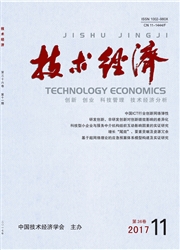

 中文摘要:
中文摘要:
基于新经济地理学理论,运用空间计量经济方法,对中国肉牛生产区域布局的变动及其成因进行实证分析。结果表明:中国肉牛生产区域呈明显的空间集聚特征;2000年以来,肉牛生产地区逐步从非农就业机会较多的中原等区域向饲草资源丰富、经济发展水平较低的东北地区、西北地区和西南地区转移。进一步研究其成因,结果表明:资源条件、经济环境、技术因素和空间互动效应对肉牛生产的区域集聚有不同程度的影响,其中技术、空间误差自相关性、农业劳动力数量、草地面积和粮食产量对中国肉牛生产的区域集聚具有明显的正向影响,而非农就业机会则具有明显的负向影响。
 英文摘要:
英文摘要:
Based on the theory of new economic geography,this paper uses the spatial econometric approach to study the change of China's beef cattle production areas and their causes empirically.The results show as follows:China's beef cattle production takes on the characteristics of obvious spatial agglomeration,and is transferring from central plains with many off-farm employment opportunities to northeast,northwest and southwest zones with rich forage resource and low economic development level gradually.Further it studies its causes.The result shows as follows:resource condition,economic condition,technical factor and spatial interaction effect have different effects on the regional agglomeration of beef cattle production;technology,spatial error autocorrelation,agricultural labor number,grassland area and grain yield have obvious positive effects on the regional agglomeration of beef cattle production;the effect of farm employment opportunity is obvious negative.
 同期刊论文项目
同期刊论文项目
 同项目期刊论文
同项目期刊论文
 期刊信息
期刊信息
